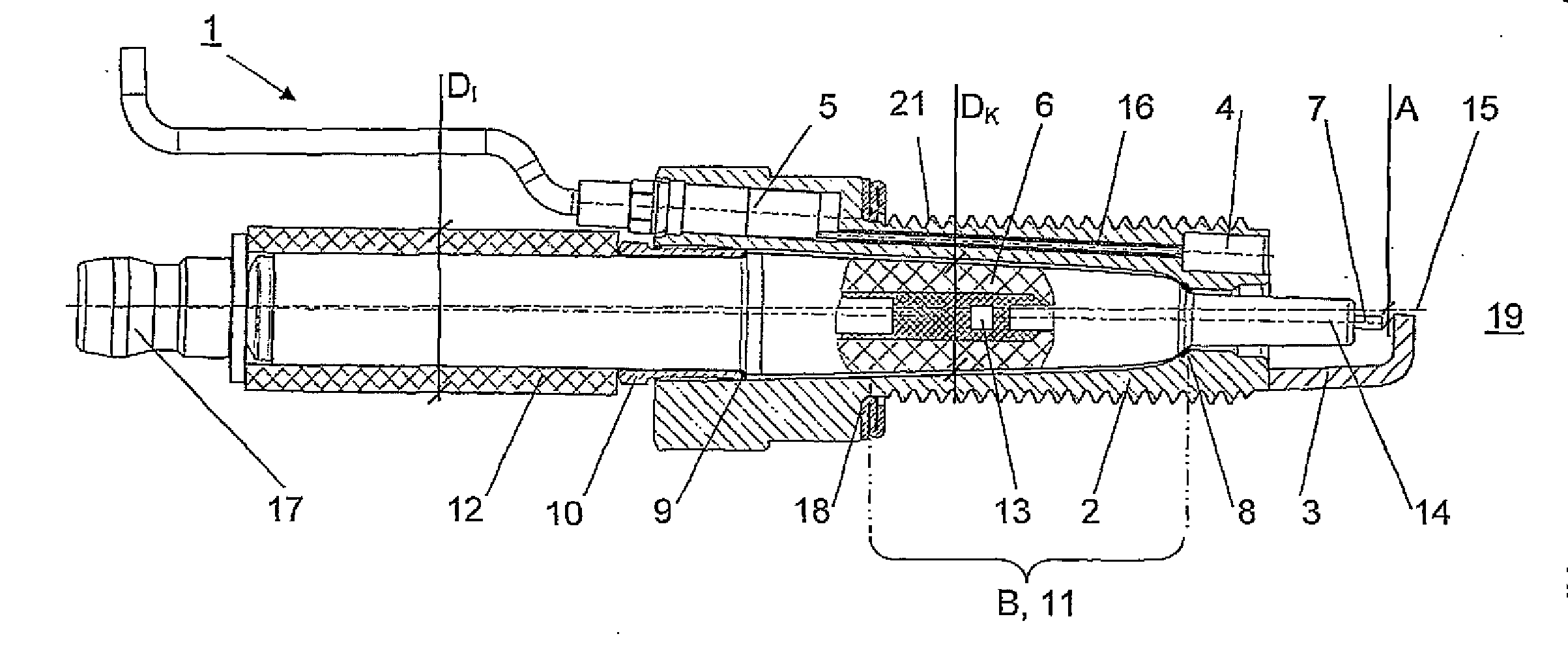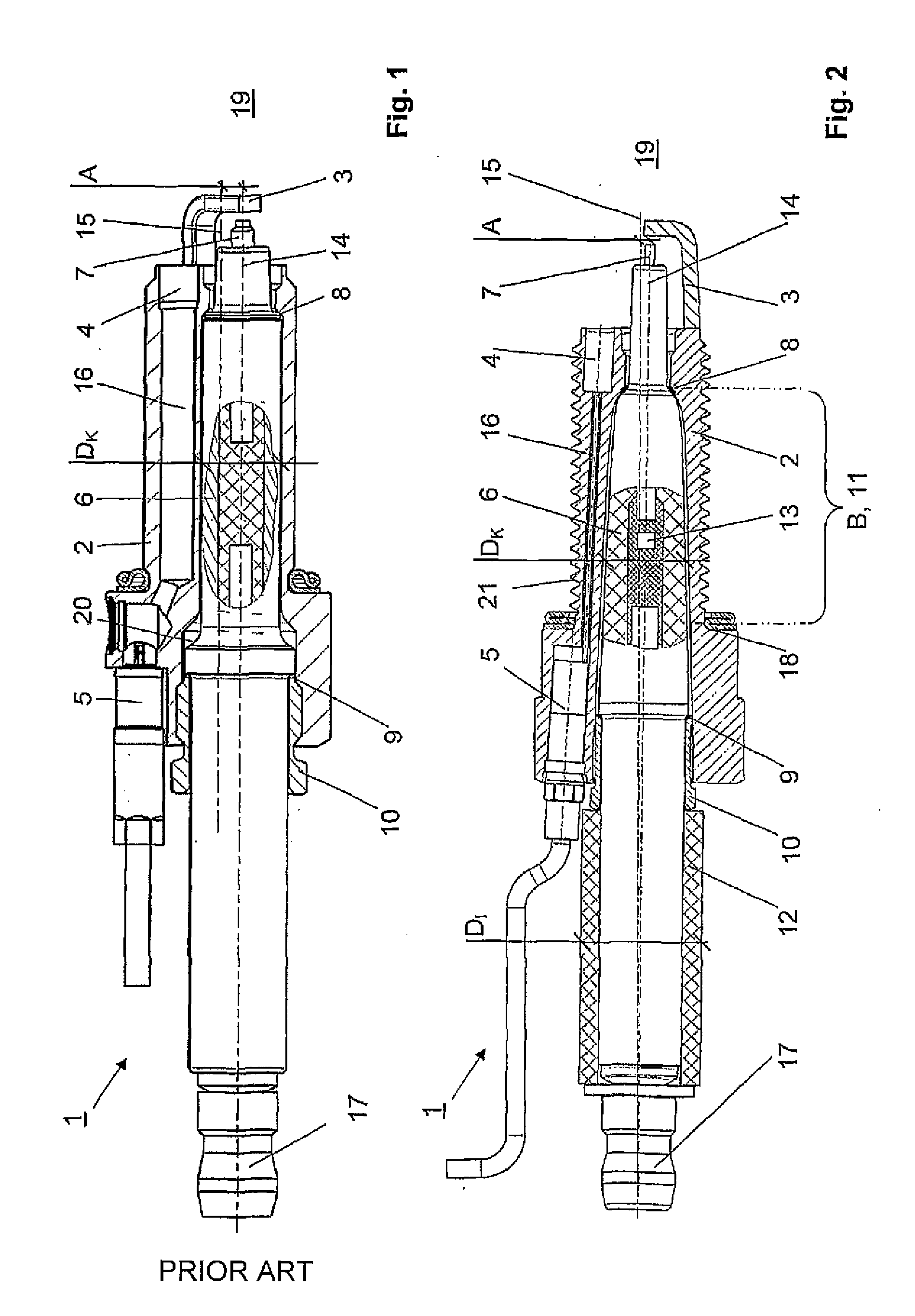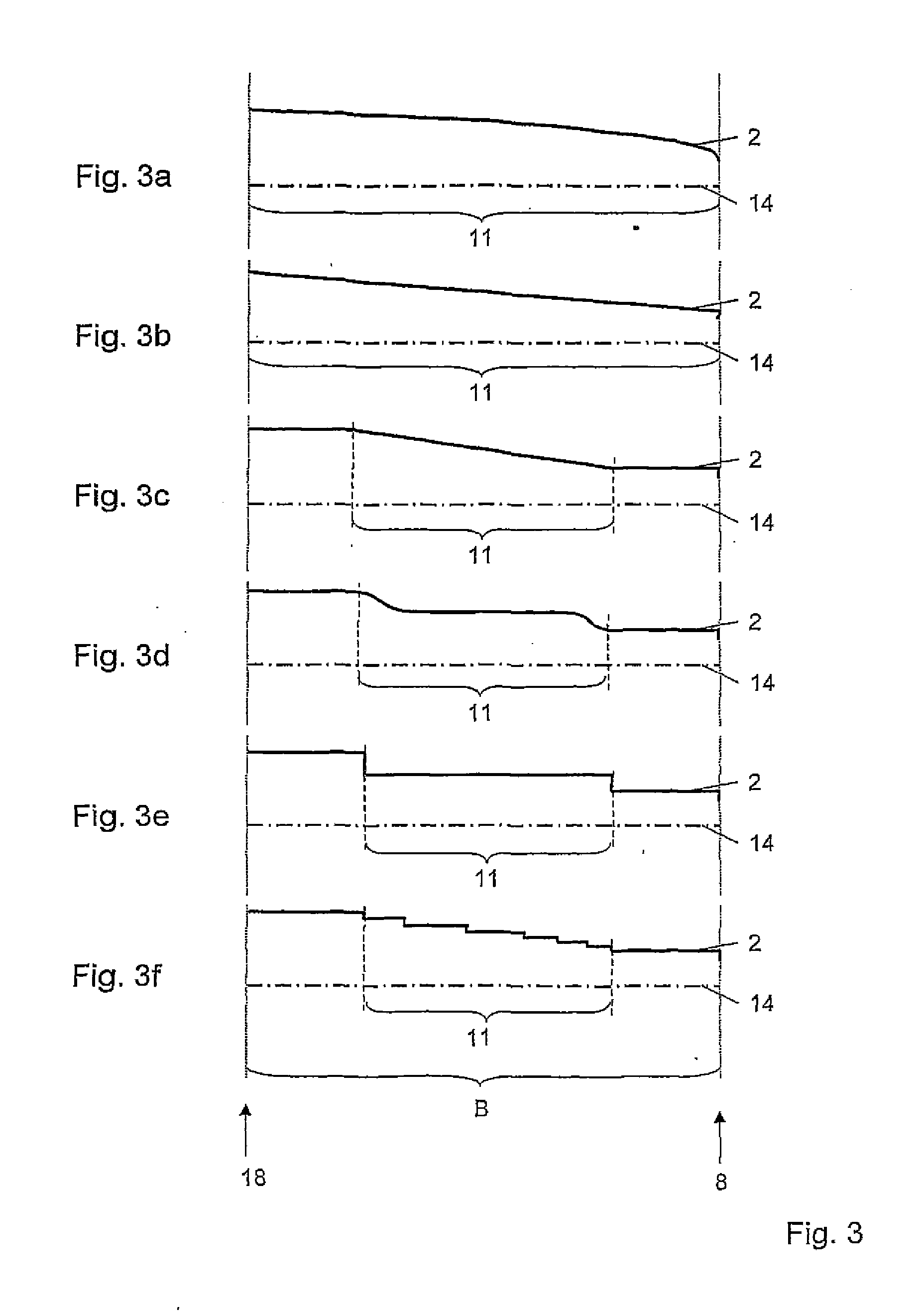Spark plug having pressure sensor
a technology of pressure sensor and spark plug, which is applied in the direction of engine ignition, structural/machine measurement, instruments, etc., can solve the problems of high risk of breakage, reduced thickness of ceramic body, and high risk of breakdown on electrical loading by ignition voltage, etc., and achieves the effect of increasing mechanical strength
- Summary
- Abstract
- Description
- Claims
- Application Information
AI Technical Summary
Benefits of technology
Problems solved by technology
Method used
Image
Examples
Embodiment Construction
[0024]FIG. 2 shows a schematic sectional illustration of a spark plug 1 according to the invention. It likewise comprises a housing 2 with a thread 21 and a sealing face towards the engine 18, an earth electrode 3 at the front and, arranged next to the latter, a pressure sensor 4 with a sensor connector 5 and a ceramic body 6 with a central electrode 7. The ceramic body 6 in turn has a front clamping shoulder 8 and a rear stop 9, by means of which the ceramic body 6 can be clamped in the housing 2 with the aid of a screw connection 10. As an alternative, it is also possible for a sensor connector 5 to be attached to the housing 2, in which case only a cable guide leads out of the housing 2.
[0025]In preferred embodiments the sensor is installed in the front region of the spark plug, preferably frontally on the combustion chamber side. This is a structural necessity particularly if the thread is an M14 thread or smaller.
[0026]In contrast to the prior art, the outer diameter DK of the ...
PUM
 Login to View More
Login to View More Abstract
Description
Claims
Application Information
 Login to View More
Login to View More - R&D
- Intellectual Property
- Life Sciences
- Materials
- Tech Scout
- Unparalleled Data Quality
- Higher Quality Content
- 60% Fewer Hallucinations
Browse by: Latest US Patents, China's latest patents, Technical Efficacy Thesaurus, Application Domain, Technology Topic, Popular Technical Reports.
© 2025 PatSnap. All rights reserved.Legal|Privacy policy|Modern Slavery Act Transparency Statement|Sitemap|About US| Contact US: help@patsnap.com



